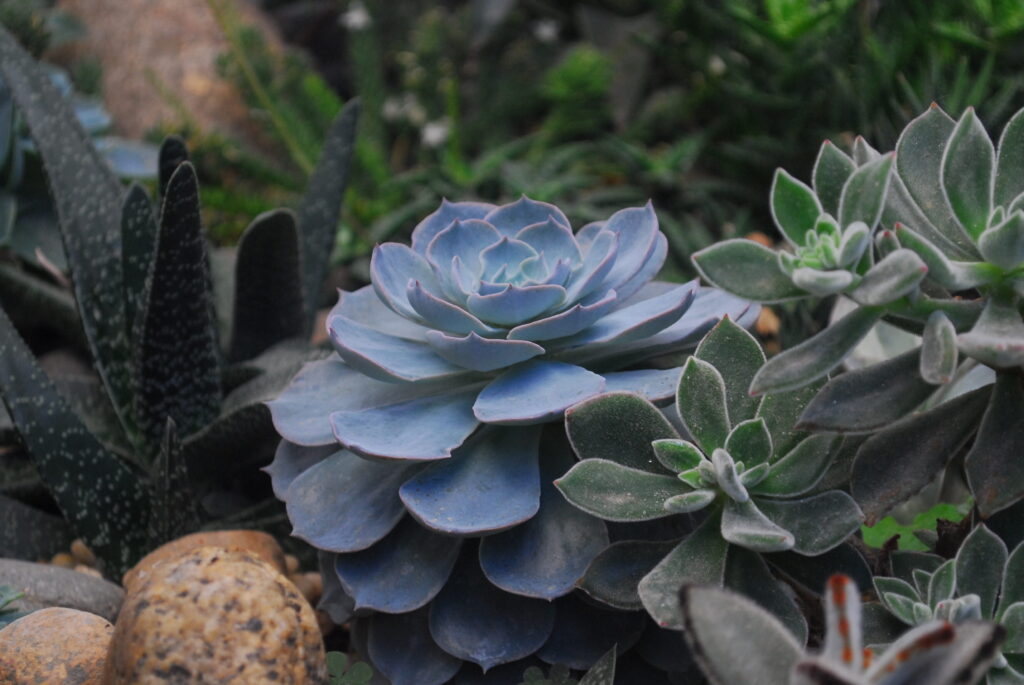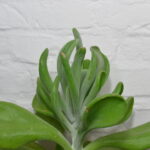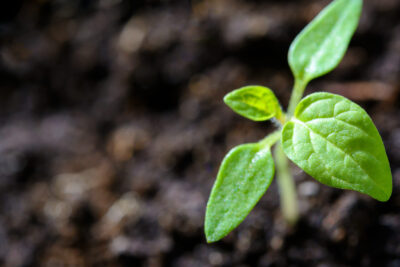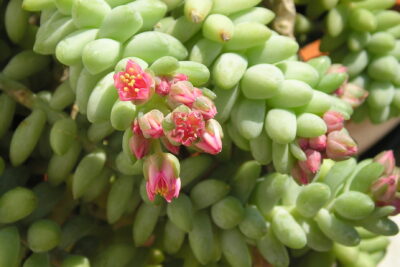
Top Heat-Loving Succulents: Perfect for Campfire Conditions

When it comes to gardening, finding the right plants for specific conditions can be a challenge. This is especially true when it comes to hot and dry climates, where many plants struggle to thrive. However, succulents are a group of plants that have adapted to survive in arid environments, making them perfect for hot and dry conditions.
We will explore some of the top heat-loving succulents that are perfect for campfire conditions. We will discuss their unique characteristics, care requirements, and how they can add beauty and resilience to your garden. Whether you're looking to revamp your outdoor space or want to start a new garden in a challenging climate, these heat-loving succulents will be your go-to plants.
- Choose succulents that thrive in high temperatures and direct sunlight
- Opt for heat-tolerant succulents like Agave, Aloe, and Echeveria
- Ensure proper drainage in the succulent's pot to prevent waterlogging in hot conditions
- Provide occasional shade during the hottest part of the day to prevent sunburn on the succulents' leaves
- Water succulents deeply but infrequently, allowing the soil to dry out completely between waterings
- Use a well-draining soil mix specifically formulated for succulents
- Protect succulents from extreme heat by providing adequate airflow and ventilation
- Apply a layer of mulch around the base of the succulents to help retain moisture in the soil
- Avoid placing succulents near heat sources like bonfires or grills
- Monitor for signs of heat stress, such as wilting or discoloration, and take appropriate action
- Frequently Asked Questions
Choose succulents that thrive in high temperatures and direct sunlight
If you love spending time outdoors during the summer, especially around a campfire, you need plants that can handle the heat. Succulents are a perfect choice for such conditions. These hardy plants are not only low maintenance but also love basking in the sun. Here are some top heat-loving succulents that will thrive in campfire conditions.
1. Aloe Vera
Aloe Vera is a popular succulent known for its medicinal properties and ability to withstand high temperatures. This versatile plant can tolerate direct sunlight and requires minimal watering. Its spiky leaves contain a gel-like substance that is excellent for soothing sunburns, making it a must-have for any outdoor enthusiast.
2. Sedum
Sedum, also known as stonecrop, is a diverse genus of succulents that come in various shapes, sizes, and colors. These hardy plants thrive in hot and dry conditions, making them perfect for campfire settings. Sedums are low-growing and create beautiful ground covers that can withstand the heat while adding a touch of natural beauty to your outdoor space.
3. Echeveria
Echeveria is a popular succulent with rosette-shaped leaves. These plants are not only heat-loving but also drought-tolerant, making them ideal for campfire conditions. Echeverias come in a wide array of colors, from pastel hues to vibrant shades, adding a visually appealing element to your outdoor space.
 Popular Chalk Stick Succulents: Exploring Varieties and Names
Popular Chalk Stick Succulents: Exploring Varieties and Names4. Agave
Agave is a striking succulent that can withstand the harshest of conditions. These plants have thick, fleshy leaves that store water, allowing them to survive in hot and dry climates. Agaves are known for their architectural beauty, making them a statement piece in any campfire setting.
5. Kalanchoe
Kalanchoe is a heat-loving succulent that produces vibrant clusters of flowers. These plants thrive in hot and dry conditions, making them an excellent choice for campfire settings. Kalanchoes are easy to care for and can add a pop of color to your outdoor space, attracting butterflies and hummingbirds.
When selecting succulents for campfire conditions, ensure you provide them with well-draining soil and adequate sunlight. Remember to water them sparingly as overwatering can be detrimental to these drought-tolerant plants. With the right care, these top heat-loving succulents will not only survive but thrive in the blazing heat of campfire conditions.
Opt for heat-tolerant succulents like Agave, Aloe, and Echeveria
If you're looking to add some greenery to your outdoor space, but live in an area with scorching temperatures, then heat-loving succulents are the perfect choice for you. These resilient plants can withstand the intense heat and dry conditions that are often associated with campfire conditions, making them ideal for your outdoor oasis.
Agave
Agave plants are known for their incredible heat tolerance and ability to thrive in arid environments. With their striking rosette-shaped leaves and a variety of sizes and colors to choose from, Agaves are a popular choice among succulent enthusiasts. These plants require minimal maintenance and can withstand prolonged exposure to high temperatures, making them perfect for campfire conditions.
Aloe
Aloes are another heat-tolerant succulent that can thrive under intense sunlight and dry conditions. These plants are not only known for their ability to survive in hot climates but also for their healing properties. Aloe vera, in particular, is renowned for its gel that can soothe sunburns and other skin irritations. With their unique and architectural shapes, Aloes can add a touch of beauty to your outdoor space while withstanding the heat of the campfire.
Echeveria
Echeverias are a popular choice among succulent enthusiasts due to their stunning rosette-shaped leaves and wide range of colors. These heat-loving plants can tolerate high temperatures and require minimal watering, making them perfect for campfire conditions. Echeverias are also known for their ability to propagate easily, so you can expand your succulent collection effortlessly.
 Succulent Flowers: A Complete Guide to Blooming Beauty
Succulent Flowers: A Complete Guide to Blooming BeautyWhen choosing heat-loving succulents for your outdoor space, make sure to provide them with well-draining soil, as these plants are susceptible to root rot if overwatered. Additionally, placing them in a spot that receives partial shade during the hottest part of the day can help protect them from scorching sun rays.
- Tip: To add visual interest to your outdoor space, consider creating a succulent arrangement using different varieties of heat-loving succulents. Play with different colors, sizes, and textures to create a stunning display.
- Tip: Don't forget to give your succulents some breathing room. Make sure to space them adequately to allow air circulation and prevent overcrowding.
So, if you're looking to add some greenery to your outdoor space that can withstand the heat of campfire conditions, opt for heat-tolerant succulents like Agave, Aloe, and Echeveria. These resilient plants will not only survive but thrive in the scorching temperatures, adding beauty and charm to your outdoor oasis.
Ensure proper drainage in the succulent's pot to prevent waterlogging in hot conditions
When it comes to growing succulents in campfire conditions, one of the most important factors to consider is proper drainage. Succulents are known for their ability to survive in arid environments, but even they can suffer if their roots are constantly sitting in water.
To ensure proper drainage, it is crucial to choose a pot with drainage holes at the bottom. These holes allow excess water to escape, preventing waterlogging and the potential for root rot. If you have a pot that doesn't have drainage holes, consider drilling some yourself or using a layer of gravel at the bottom to create a reservoir for excess water.
Additionally, selecting a well-draining soil mix is essential. A mix specifically designed for succulents and cacti, which usually contains a combination of sand, perlite, and peat moss, will promote proper drainage and prevent water retention. Avoid using regular potting soil, as it tends to retain moisture for longer periods.
Remember to water your succulents sparingly and only when the soil is completely dry. Overwatering in hot conditions can lead to root rot and other problems, so it's better to err on the side of underwatering rather than overwatering.
By ensuring proper drainage in the succulent's pot, you can create a favorable growing environment that mimics the campfire conditions these heat-loving plants thrive in.
 The Rare Succulent: Uncovering Its Unique Qualities
The Rare Succulent: Uncovering Its Unique QualitiesProvide occasional shade during the hottest part of the day to prevent sunburn on the succulents' leaves
When it comes to growing succulents in hot and sunny conditions, it's important to provide them with some relief from the intense heat. While succulents are known for their ability to withstand dry and arid climates, prolonged exposure to scorching sun rays can cause sunburn on their leaves.
To protect your heat-loving succulents from sunburn, it's advisable to provide them with occasional shade during the hottest part of the day. This can be achieved by placing them under a shade cloth, a tree, or even by using a patio umbrella to create a temporary shade spot.
By providing shade, you'll help to reduce the direct exposure of the succulents' leaves to the harsh sunlight, preventing them from getting scorched and damaged. It's important to note that while succulents thrive in full sun, they still need some protection during extreme heat conditions.
Remember to monitor the sunlight patterns in your garden or outdoor space and adjust the shading accordingly. Providing shade during the hottest part of the day, usually between 11 am and 3 pm, will help ensure the health and longevity of your heat-loving succulents.
In addition to shade, it's crucial to pay attention to other environmental factors, such as proper watering and soil drainage, to create the ideal campfire conditions for your succulents.
So, don't forget to give your heat-loving succulents a break from the scorching sun by providing them with occasional shade during the hottest part of the day. Your succulents will thank you by thriving and adding beauty to your outdoor space!
 Best Sun-loving Succulents for Tokyo: Top Choices & Tips
Best Sun-loving Succulents for Tokyo: Top Choices & TipsWater succulents deeply but infrequently, allowing the soil to dry out completely between waterings
Succulents are known for their ability to thrive in harsh conditions, including intense heat and drought. These low-maintenance plants have adapted to storing water in their leaves, stems, and roots, making them perfect for campfire conditions where water may be scarce. However, it's important to know the right watering techniques to keep your succulents healthy and happy.
When it comes to watering succulents, the key is to provide deep watering but at a less frequent interval. Succulents prefer to be watered thoroughly, allowing the water to penetrate the soil all the way to the roots. This encourages the roots to grow deeper, resulting in stronger and more resilient plants. However, succulents are susceptible to root rot if the soil remains consistently moist, so it's crucial to let the soil dry out completely between waterings.
To determine when it's time to water your succulents, check the soil moisture level. Stick your finger about an inch into the soil, and if it feels dry, it's time to water. If the soil is still slightly damp, wait a few more days before watering again. Remember, it's better to underwater than to overwater succulents.
When watering your succulents, make sure to use a well-draining soil mix specifically designed for succulents. This type of soil allows excess water to flow through, preventing water from sitting in the pot and causing root rot. Additionally, use a pot with drainage holes to ensure proper water drainage.
Pro tip: If you're unsure about the watering needs of your succulents, it's always better to err on the side of underwatering. Succulents are resilient plants and can tolerate drought conditions better than excessive moisture. Plus, they can bounce back quickly once they receive proper hydration.
By following these watering guidelines, you can ensure that your heat-loving succulents will thrive in campfire conditions. Remember to water deeply but infrequently, allowing the soil to dry out completely between waterings. With proper care, your succulents will not only survive but also add a touch of natural beauty to your outdoor space.
Use a well-draining soil mix specifically formulated for succulents
When it comes to growing heat-loving succulents, having the right soil mix is crucial. Succulents thrive in well-draining soil that allows excess water to quickly drain away. To ensure your succulents have the best growing conditions, use a well-draining soil mix specifically formulated for succulents.
 Large and Lush: Discover the Succulents that Grow to Impressive Sizes
Large and Lush: Discover the Succulents that Grow to Impressive SizesThis type of soil mix is typically comprised of a combination of materials such as coarse sand, perlite, and organic matter. These components work together to create a loose and porous soil structure that allows water to flow through easily, preventing root rot and moisture-related issues. The coarse sand and perlite provide excellent drainage, while the organic matter helps retain some moisture and provides essential nutrients for the succulents.
When selecting a pre-made succulent soil mix, look for one that is labeled specifically for succulents or cacti. These mixes are often sterilized to prevent the growth of unwanted pests or diseases, which can be detrimental to your succulents.
Alternatively, you can create your own succulent soil mix by combining equal parts of potting soil, coarse sand, and perlite. This DIY approach allows you to customize the mix based on the specific needs of your succulents.
Important: Avoid using regular garden soil or potting soil that is too heavy and retains moisture for extended periods. This type of soil can lead to root rot and other issues, especially in hot and dry conditions.
Protect succulents from extreme heat by providing adequate airflow and ventilation
When it comes to growing succulents in hot and dry environments, it's crucial to provide them with proper airflow and ventilation to prevent heat stress. Succulents are known for their ability to store water in their leaves, stems, and roots, which helps them survive in arid conditions. However, excessive heat can still take a toll on these heat-loving plants.
To protect your succulents from extreme heat, follow these tips:
 Explore Unique and Stunning Succulent Plants with Striking Names
Explore Unique and Stunning Succulent Plants with Striking Names1. Choose the right location
When planting succulents, select a location that receives ample sunlight but also offers some shade during the hottest part of the day. This will help prevent direct exposure to intense heat, reducing the risk of sunburn and heat damage.
2. Use well-draining soil
Succulents thrive in well-draining soil that allows water to quickly pass through without causing root rot. Use a specialized succulent mix or amend regular potting soil with perlite or pumice to improve drainage. This will prevent waterlogged soil, which can lead to heat stress and root issues.
3. Water deeply but infrequently
While succulents are drought-tolerant, they still require regular watering. However, it's important to water deeply and infrequently to mimic their natural growing conditions. This encourages the plants to develop a robust root system that can better withstand heat stress.
4. Mulch to conserve moisture
Applying a layer of organic mulch, such as wood chips or gravel, around your succulents can help conserve moisture in the soil. This reduces evaporation and keeps the roots cooler during scorching temperatures.
5. Provide adequate airflow
Succulents need proper airflow to prevent heat buildup around their leaves. Avoid overcrowding your plants and ensure they have enough space to grow without obstructing each other. This allows air to circulate freely, dissipating excess heat and reducing the risk of fungal diseases.
6. Protect from intense afternoon sun
In extreme heat conditions, it's advisable to provide some shade for your succulents during the hottest part of the day. Use shade cloth, sheer curtains, or even move them to a partially shaded area if possible. This will shield them from intense afternoon sun and help maintain their vibrant colors.
By implementing these measures, you can safeguard your succulents from the scorching heat and create a thriving garden even in campfire-like conditions. Remember to monitor their moisture levels, provide adequate airflow, and adjust their environment accordingly. With proper care, your heat-loving succulents will continue to amaze with their resilience and beauty.
 Best Tall-Leafed Succulents for Indoor Thriving: A Guide
Best Tall-Leafed Succulents for Indoor Thriving: A GuideApply a layer of mulch around the base of the succulents to help retain moisture in the soil
Why Mulch is Important for Succulents in Campfire Conditions
Succulents are known for their ability to thrive in harsh and arid conditions, making them the perfect choice for campfire landscapes. However, the extreme heat and dryness of campfire conditions can pose a challenge for these plants. One effective way to help succulents survive and flourish in such conditions is by applying a layer of mulch around their base.
Mulch acts as a protective layer, serving multiple purposes that are essential for the well-being of heat-loving succulents. Here are some reasons why mulch is important:
- Moisture Retention: The primary role of mulch is to retain moisture in the soil. In campfire conditions, where the soil tends to dry out quickly due to high temperatures, mulch helps create a barrier that slows down evaporation. This allows the succulents to access water for a longer period, preventing dehydration and promoting healthy growth.
- Weed Control: Another benefit of mulch is its ability to suppress weed growth. Campfire landscapes are often prone to weed invasion, which can compete with succulents for essential nutrients and water. By applying mulch, you create a physical barrier that inhibits weed germination and growth, ensuring that your succulents have ample resources to thrive.
- Temperature Regulation: Mulch acts as a natural insulator, helping to regulate soil temperature. In campfire conditions, where the heat can be intense, mulch provides a buffer that prevents the soil from becoming too hot or cold. This stability is crucial for succulents, as extreme temperatures can damage their delicate roots.
When choosing mulch for your heat-loving succulents, opt for materials that are organic and well-draining. Good options include wood chips, pine needles, or gravel. Apply a layer of mulch around the base of each succulent, ensuring that it does not touch the stem or leaves. This will help prevent rot and fungal diseases.
Remember to regularly check the moisture level of the soil beneath the mulch and adjust watering accordingly. While mulch aids in moisture retention, it is still important to strike a balance and avoid overwatering, as this can lead to root rot.
By incorporating mulch into your campfire landscape, you provide your heat-loving succulents with the ideal conditions to thrive. Not only will they withstand the intense heat, but they will also add a touch of natural beauty to your outdoor space. So, go ahead and give your succulents the care they deserve - with a layer of mulch!
Avoid placing succulents near heat sources like bonfires or grills
When it comes to succulents, heat is their ally. These resilient plants thrive in arid climates and can withstand high temperatures. However, it is important to note that while succulents love heat, they should be kept away from direct heat sources like bonfires or grills.
 Discover the Must-Have Succulent Types for Your Collection
Discover the Must-Have Succulent Types for Your CollectionSucculents are known for their ability to store water in their leaves, stems, and roots, making them well-suited for dry and hot environments. Their thick, fleshy leaves act as water reservoirs, allowing them to survive in conditions where water is scarce. This adaptation makes them perfect for campfire conditions, where the heat can be intense and the air dry.
However, it is crucial to give your succulents the right amount of heat. Placing them too close to a bonfire or grill can expose them to excessive heat, which can lead to damage or even death. The intense heat can cause their leaves to burn, wilt, or become discolored.
To ensure the health and well-being of your heat-loving succulents, it is best to keep them at a safe distance from direct heat sources. A good rule of thumb is to maintain a minimum distance of three feet between your succulents and any heat-emitting object. This will allow them to enjoy the warmth without being overwhelmed by the intensity.
Additionally, it is important to provide your succulents with proper ventilation. While succulents can handle heat, stagnant hot air can be detrimental to their growth. Make sure there is enough airflow around your succulents to prevent overheating. Placing them in well-ventilated areas or providing a gentle breeze can help keep them cool and healthy.
Remember, heat-loving succulents are perfect for campfire conditions, but it is essential to strike a balance to ensure their well-being. By keeping them at a safe distance from direct heat sources and providing proper ventilation, you can create an ideal environment for these resilient plants to thrive.
Monitor for signs of heat stress, such as wilting or discoloration, and take appropriate action
When it comes to succulents, they are known for their ability to thrive in hot and arid conditions. However, even the toughest succulents can experience heat stress if exposed to extreme temperatures for an extended period. It is essential for succulent enthusiasts to monitor their plants for signs of heat stress and take appropriate action to ensure their well-being.
 Discover the Most Beautiful Succulents with White Flowers
Discover the Most Beautiful Succulents with White FlowersOne of the most common signs of heat stress in succulents is wilting. When succulents are exposed to excessive heat, they may start to droop and appear limp. This is a defense mechanism that allows the plant to conserve water and reduce the surface area exposed to the scorching sun. If you notice wilting in your succulents, it's crucial to provide them with shade or move them to a cooler location until the temperatures become more tolerable.
Discoloration is another indication that your succulents may be suffering from heat stress. High temperatures can cause the leaves of succulents to turn yellow or brown. This discoloration is often a result of sunburn, which occurs when the plants are exposed to intense sunlight without any protection. To prevent sunburn, it is advisable to provide your succulents with partial shade during the hottest part of the day or use a shade cloth to filter the sunlight.
When you observe signs of heat stress in your succulents, it's essential to take appropriate action promptly. Here are a few steps you can take to help your heat-loving succulents recover:
- Provide shade: Move your succulents to a shaded area or use a shade cloth to protect them from direct sunlight during the hottest part of the day.
- Adjust watering: During periods of extreme heat, succulents may need more frequent watering to compensate for increased evaporation. However, be cautious not to overwater, as this can lead to root rot. Monitor the moisture levels in the soil and adjust your watering schedule accordingly.
- Mist the leaves: Spraying a fine mist of water on the leaves can help cool down the succulents and provide temporary relief from the heat. Avoid misting during the peak sun hours to prevent the water droplets from acting as magnifying glasses and intensifying the sun's rays.
- Provide adequate airflow: Ensure proper ventilation around your succulents to prevent heat from getting trapped. This can be achieved by spacing out the plants or placing them in an area with good air circulation.
- Consider temporary relocation: If the heatwave is prolonged and severe, it might be beneficial to temporarily move your succulents indoors or to a cooler location until the temperatures become more favorable.
By monitoring your succulents for signs of heat stress and taking appropriate action, you can ensure that these heat-loving plants continue to thrive even in campfire-like conditions. Remember, a little extra care during extreme heat can go a long way in preserving the health and beauty of your succulents.
Frequently Asked Questions
1. What are succulents?
Succulents are plants that have thick, fleshy leaves and stems that store water. They are known for their ability to survive in dry and arid conditions.
2. Can succulents tolerate high heat?
Yes, many succulents are well adapted to high heat and can thrive in hot and dry conditions.
3. Do succulents need a lot of water?
No, one of the reasons succulents are so popular is because they have low water requirements. They are able to store water in their leaves and stems, allowing them to survive long periods without watering.
 Explore Glowing Succulents: Nature's Enchanting Illumination
Explore Glowing Succulents: Nature's Enchanting Illumination4. What are some heat-loving succulents for campfire conditions?
Some heat-loving succulents that can thrive in campfire conditions include Agave, Aloe, Echeveria, and Sedum. These plants are not only drought-tolerant but also have fire-resistant qualities.
If you want to read more articles similar to Top Heat-Loving Succulents: Perfect for Campfire Conditions, you can visit the Varieties and Colors category.






You Must Read